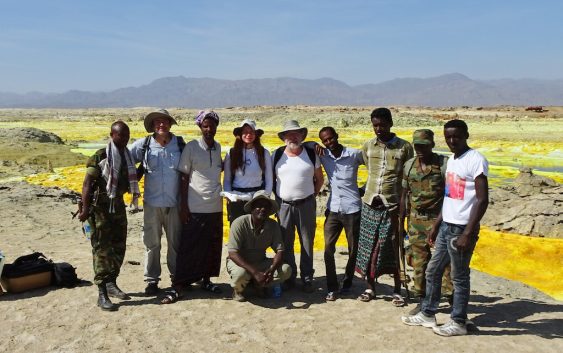The field trips to Dallol have been successfully performed in January 2016 and January 2017. We have collected samples of liquid, gases, air and air particles, etc… and make numerous in-situ measurements of physical and chemical variables such as pH, temperature, pressure, salinity, conductivity, oxygen, redox, visible spectra, etc… The aim of this project is to perform:
-
A rigorous study of the hydrochemistry of the brines including the analysis of the organic compounds and gases. The analysis will be performed for the different brines upwelling not only in Dallol but also in other hydrothermal sites as the Yellow Lake and Black Lake.
-
An extensive time evolution analysis of the mineral phases forming from the brines surging in the Dallol site and the Danakil depression in general.
-
A thermodynamic and kinetics model of the mineral genesis based on hydrochemistry and current theories of nucleation, crystal growth.
-
A scientific interpretation of mineral pattern formation in Dallol, including the genesis of all the fascinating structures forming in the site, such as the Pillars, the Dams, the “water lilies” and the “flowers of Dallol”.
-
A geochemical explanation of the color and the time evolution of the colors of the mineral structures forming in Dallol.
-
Search for the existence of life -if any- in the most extreme areas of the Danakil desert.
-
Search for mineral growth patterns and their plausible catalytic role in prebiotic chemistry.
More specifically, with respect to the second field trip to Dallol (3-17th January 2017), it was the result of a previous investigation from which we learned that hyperacidic waters of the hydrothermal system of Dallol could be very relevant to our experiments on mineral self-assembly. We organised a very demanding trip to the boundary between Eritrea and Ethiopia, We were studying for ten days this fascinating volcano and its hydrothermal springs and pools. We were collecting samples of all the springs and pools, minerals, measuring temperature, Eh, brines properties, collecting air sample, and performing experiments of crystallization and bioactivity. We took pictures and videos using also a drone.


